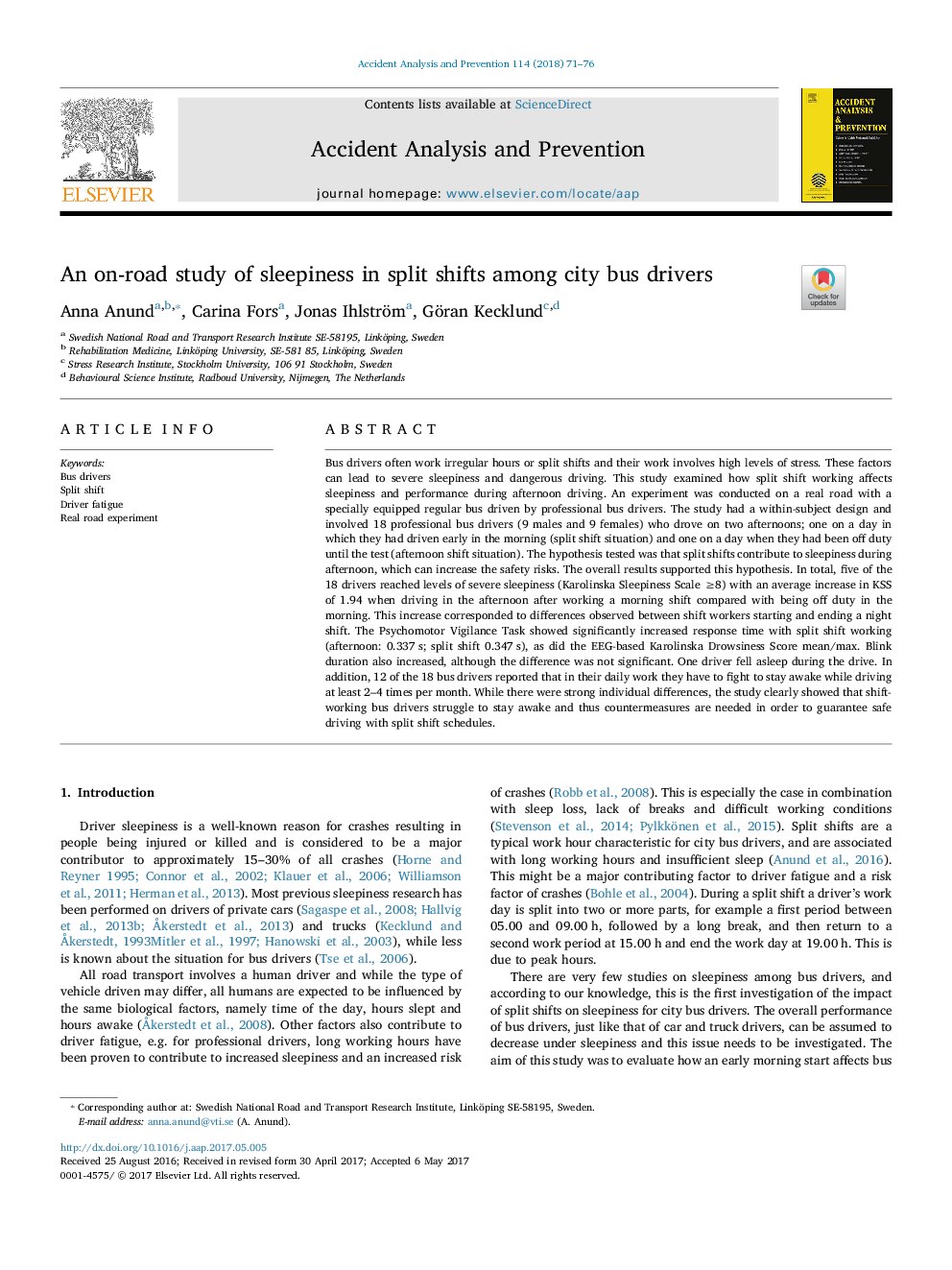ترجمه فارسی عنوان مقاله
یک مطالعه جادویی از خواب آلودگی در تقسیم بندی در میان رانندگان اتوبوس شهرستان
عنوان انگلیسی
An on-road study of sleepiness in split shifts among city bus drivers
| کد مقاله | سال انتشار | تعداد صفحات مقاله انگلیسی |
|---|---|---|
| 133501 | 2018 | 6 صفحه PDF |
منبع

Publisher : Elsevier - Science Direct (الزویر - ساینس دایرکت)
Journal : Accident Analysis & Prevention, Volume 114, May 2018, Pages 71-76
ترجمه کلمات کلیدی
رانندگان اتوبوس، تغییر تقسیم، خستگی درایور، آزمایش جاده واقعی
کلمات کلیدی انگلیسی
Bus drivers; Split shift; Driver fatigue; Real road experiment;

